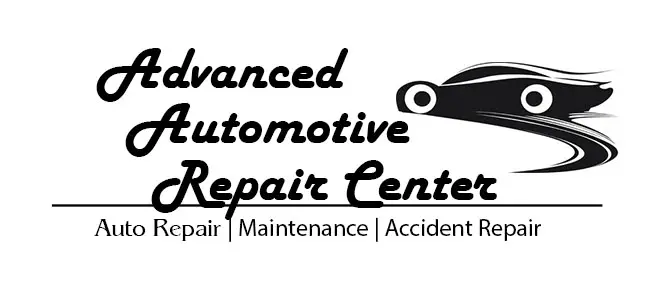
The Basics Of Car Alignment: What You Need To Know
Driving a car is a rite of passage for most people. It’s an essential part of our lives, and it can be frustrating when it doesn’t run the way we want it to. That’s where car alignment comes in. Car alignment is the process of adjusting the suspension and other mechanical components of your car so that it runs smoothly and correctly. If you’re experiencing any problems with your car, or if it just doesn’t feel right, it may be time to get it checked out. Here are the basics of car alignment and what you need to know in order to have it done correctly.
What is a car alignment?
When it comes to your vehicle, alignment is key. It ensures that your car is running in its best possible condition and helps to ensure a safe ride. There are a few things you need to know about car alignment before you take your vehicle in for service.
First and foremost, an alignment can help correct any misaligned joints in your car’s chassis. This can lessen the chances of future repairs or problems down the road.
Secondly, an alignment can help improve handling and reduce body roll. This means that you’ll have more control when driving, which is especially important on bumpy roads or on tight corners.
Finally, an alignment can help with tire wear and performance by ensuring that your car’s suspension is working properly. A good alignment will also tighten up any loose suspension components so that they don’t cause extra wear on your tires.
What are the different types of car alignments?
There are many types of car alignments, each with its own benefits and drawbacks. In this article, we’ll discuss the different types of alignments and their purposes.
Four-Wheel Alignment:
The most common type of alignment is four-wheel alignment. Four-wheel alignment corrects the positions of the wheels on the car so that the vehicle travels in a straight line. Four-wheel alignment is necessary for optimum performance and safety. If your car isn’t properly aligned, it can cause problems such as abnormal tire wear, poor fuel economy, and even road instability.
Reasons to Have Your Car Aligned:
Four-wheel alignment is necessary for optimum performance and safety. Poor performance can be caused by improper wheel alignment, which can lead to abnormal tire wear, poor fuel economy, and even road instability.
Benefits of Four Wheel Alignment:
Four wheel alignment corrects the positions of the wheels on your car so that your vehicle travels in a straight line. This improves vehicle handling and stability while driving; therefore, it’s important for both driver and passenger safety. Additionally, having your car aligned will help you achieve optimal fuel economy as well as improved steering response and braking power.
What are the benefits of getting an alignment?
If your car is not driving how it should, it may be time for an alignment. An alignment can help to improve your car’s handling and stability, making it easier to drive. Here are some of the benefits of getting an alignment:
Improved Handling and Stability:
An alignment can help to improve the car’s handling and stability. This makes it easier to drive and avoid accidents.
Easier To Drive In The Long Run:
An alignment can also help you save on fuel over time by improving the car’s overall performance. Having a properly aligned car will make it easier to maneuver in tight spaces and take corners at higher speeds without having to worry about losing control or rolling over.
Faster Speeds:
An alignment can also improve your car’s speed. This is because it can smooth out the driving experience and help to reduce the amount of jolting and vibration that you experience while driving.
Better Mileage:
An alignment can also help to improve your car’s fuel mileage. This is because it can lessen the amount of wear and tear that your engine experiences over time.
If you’re looking for an affordable and reliable way to improve your car’s performance and handling, an alignment may be the solution for you.
What should you do if your car won’t stay aligned?
If you’ve been driving your car for a while and it’s not staying straight, there are a few things you can do to try and get it back into alignment.
First, make sure your tires are properly inflated. Underinflation can cause your wheels to turn in different directions, which will eventually cause the car to become out of alignment. Make sure to check the pressure regularly and keep it at the manufacturer’s recommended level.
Second, make sure your suspension is working properly. If your car has a soft suspension, it may not be able to handle the stresses of being out of alignment. A stiffer suspension will help protect your vehicle from becoming damaged.
Third, make sure all of the components of the vehicle are properly aligned. This includes the steering wheel, front and rear suspension systems, and even the engine! Each component must be lined up in order for everything to work together correctly.
If you’re still having problems with your car staying aligned, take it to a mechanic for a proper diagnosis. They may need to perform some tests or adjust certain parts in order to fix the issue.
How much does it cost to get an alignment?
There are a few different types of car alignments, and each one costs a different amount. The most common type is an alignment check, which simply checks the alignment of your wheels and makes any necessary adjustments. A basic alignment can cost anywhere from $40 to $200, but there are also more expensive options that correct severe misalignments or problems. For example, a full suspension alignment can cost as much as $700.
There is no one answer to this question, as alignment costs vary depending on the type of alignment and where it is performed. However, a good rule of thumb is to expect to pay between $60 and $120 for an alignment check, and between $130 and $300 for a full suspension alignment.
Conclusion
Aligning your car correctly is essential for a smooth ride. In this article, we will outline the basics of car alignment and what you need to know in order to get it done properly. We will also provide helpful tips on how to find the best alignment for your vehicle, as well as explain the different types of adjustments that can be made. By following our advice, you can ensure a comfortable driving experience every time you hit the road.
